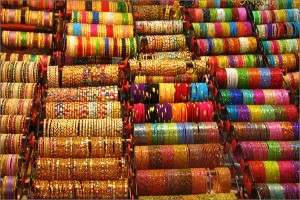 Bharatanatyam is recognized for its elegance, purity, tenderness, and sculptural poses. It is one of the most popular dance forms in India.
Bharatanatyam is recognized for its elegance, purity, tenderness, and sculptural poses. It is one of the most popular dance forms in India.
One of the most ancient dance forms performed today is Bharatanatyam, a classical Indian dance form which originated in the South Indian state of Tamil Nadu. Bharatanatyam developed through various reconstructions of the Sadir Natyam, the art of temple dance dating back to the 17th century. In turn, Sadir Natyam was derived from more ancient dance forms. Classical Indian music is an essential part of Bharatanatyam, as is evident from the stone sculptures of the ancient temple of Chidambaram.
As the name describes, Bharatanatyam is the combination of:
Bha: Bhavam (Expression)
Ra: Ragam (Music),
Ta: Talam (Beat or rhythm)
Natyam (Dance in Tamil and Kannada)
Bharatanatyam is recognized for its elegance, purity, tenderness, and sculptural poses. It is one of the most popular dance forms in India and is performed widely by both male and female dancers all over the world.
SANGAM AGE REFERENCES
A variety of dance traditions are said to have flourished during the times of the golden age of Tamil literature—the Sangam Age. Bharatanatyam dance is referred to in surviving Sangam Age literature and poetry texts such as Tolkappiyam and Silappadikaram. One of the main characters of Silappadikaram, the courtesan Madhavi, is portrayed as is a highly accomplished Bharatanatyam dancer. The epic Silappadikaram, depicting the revered arts of music and dance, is considered a treasure trove of ancient Tamil culture and society.
POSTURES AND SCULPTURES
The dance form of Bharatanatyam known during ancient times as Dasi Attam was performed by devadasis, the Hindu temple dancers. It must be noted that many of the ancient sculptures in Hindu temples are actually based on the Bharatanatyam dance postures called Karanas. In fact, on these sculptures, the celestial dancers known as Apsaras are depicted as dancing the heavenly version of Bharatanatyam.
BHARATANATYAM FORMS
Tanjore was a separate country in ancient days and has always been the center of learning and culture in Tamil Nadu. A famous quartet of brothers, Chinnayya, Ponniah, Sivanandam and Vadivelu, made a rich contribution to music and to Bharatanatyam at the Tanjore Court during the time of the Marathi King Saraboji (1798–1824). They revised and edited the Bharatanatyam dance forms into the present forms of Alarippu, Jathiswaram, Sabdham, Varnam, and Tillana. The four brothers and their descendants formed a community in Tanjore and became the original stock of Nattuvanars, the dance teachers of Bharatanatyam.
FIRE-DANCE
Classical Indian dance forms represent the five elements: Odissi (element of water), Kuchipudi (element of earth), Mohiniattam (element of air) and Kathakali (element of sky or ether), and Bharatanatyam (element of fire). As a fire-dance, Bharatanatyam symbolizes the mystic manifestation of the metaphysical element of fire in the human body as the movements evoke a dancing flame.
Bharatanatyam has two diverse aspects to it: the feminine aspect of Lasya, demonstrated through graceful lines and movements, and the masculine aspect of Tandava, which is also referred to as Shiva Thandavam—the dance of Shiva. These two opposing aspects bear a resemblance to the Yin and Yang of Chinese culture.
STALWARTS
E. Krishna Iyer was one of the greats who played an instrumental role in raising the social status of Bharatanatyam and popularizing it in the 20th century. Dancer Rukmini Devi Arundale promoted modifications to the dance form, especially the Pandanallur style of Bharatanatyam, which eventually led to attention from the West.
KALAKSHETRA
After studying Bharatanatyam for three years, Rukmini Devi Arundale founded the school Kalakshetra outside the city of Madras in 1936. Kalakshetra was a training school to teach and promote Bharatanatyam and other studies in Indian music and art. At that time, Bharatanatyam was performed only by women, while men called Nattuvanars would teach the dance form without actually performing it. However, Rukmini Devi instructed men and was one of first teachers to encourage them to perform.
INFLUENCE ABROAD
A person learning Bharatanatyam will normally study for years before giving the arangetram (debut dance performance). Over the years, Bharatanatyam has found enthusiasts all over the world. Seeing the rise in popularity for the dance form, numerous academic and commercial dance institutes have been set up in many countries.
BREAKING BARRIERS
Bharatanatyam is not restricted to being performed only by Hindus. As the popularity of Bharatanatyam crosses religious boundaries, many Christians and Muslims are learning the dance form.
POPULAR CULTURE
Bharatanatyam dance is no longer restricted to inside Hindu temple shrines, but is also performed outdoors. Performances are even allowed outside the temple compounds at various festivals. Popular movies and television programs have also done their part in taking Bharatanatyam to the homes of many.


























